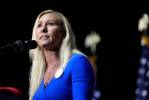EDITORIAL: Cries of poverty multiple as feds turn off the money spigot
Former Speaker of the House Paul Ryan once observed the long-term consequences of runaway spending creates “the most predictable crisis we’ve ever had in this country.” State and local governments being wholly unprepared for the end of coronavirus funding may be the second.
Politico recently reported that numerous states are facing budget deficits. California had a surplus of almost $100 billion two years ago. Now, it’s staring down a two-year deficit of up to $68 billion. New York is grappling with a budget hole of $4.3 billion. Its reluctance to reduce Medicaid enrollment could add another $1.5 billion to that. Maryland faces a $761 million deficit that will soon grow to more than $2.5 billion without action.
At this point, Nevada appears in reasonable shape. State tax revenue has exceeded expectations, and last September, Nevada’s rainy day fund topped $1.2 billion.
But even states that have enjoyed higher revenues are bleeding red ink thanks to a lack of fiscal discipline. Since 2013, collective state spending went from $1.67 trillion to $2.96 trillion. That 77 percent increase far outpaced inflation, which was a bit more than 30 percent. More than half of the spending increase occurred since the emergence of the coronavirus in 2020.
Much of the money that enabled states to blast out these budget holes came from Washington. In 2020, higher federal support was understandable as states grappled with how best to respond to the pandemic. But the coronavirus was no longer a crisis when President Joe Biden signed the $1.9 trillion American Rescue Plan. That bill sent $350 billion to state and local governments and another $170 billion to public schools.
That aid wasn’t necessary at the time — it was a thinly disguised subsidy for blue state lawmakers — and it was obvious it wasn’t going to last. Yet, many states didn’t want to see it coming.
“Pandemic funds from Washington have dried up,” Democrat New York Gov. Kathy Hochul said during her most recent State of the State speech. Now, “it’s up to all of us to make the hard yet necessary decisions and use taxpayer dollars creatively and responsibly.”
Note the implication that fiscal responsibility was absent when the D.C. dollars were flowing.
While the state of Nevada has managed the matter better than most, it’s unlikely every local government has been so responsible. Pay special attention to the Clark County School District. It received $777 million from the American Rescue Plan and Secondary School Emergency Relief. It spent the loot on things such as Chromebooks, new curriculum and virtual instruction. The money didn’t produce much in the way of academic improvement, but you can be sure the district will be crying poverty now that it’s gone.
It won’t be alone. Many districts are unprepared to move forward without the crutch. “As the money runs out,” The Washington Post reported in August, “education advocates are warning of a fiscal cliff that could drop school systems into financial disarray.”
Any “disarray” will be of their own doing — whether it concerns a school district, local government or state. Building one-time revenue into baseline budgets is the height of fiscal irresponsibility. Governments that mismanaged pandemic money shouldn’t receive another bailout.





























